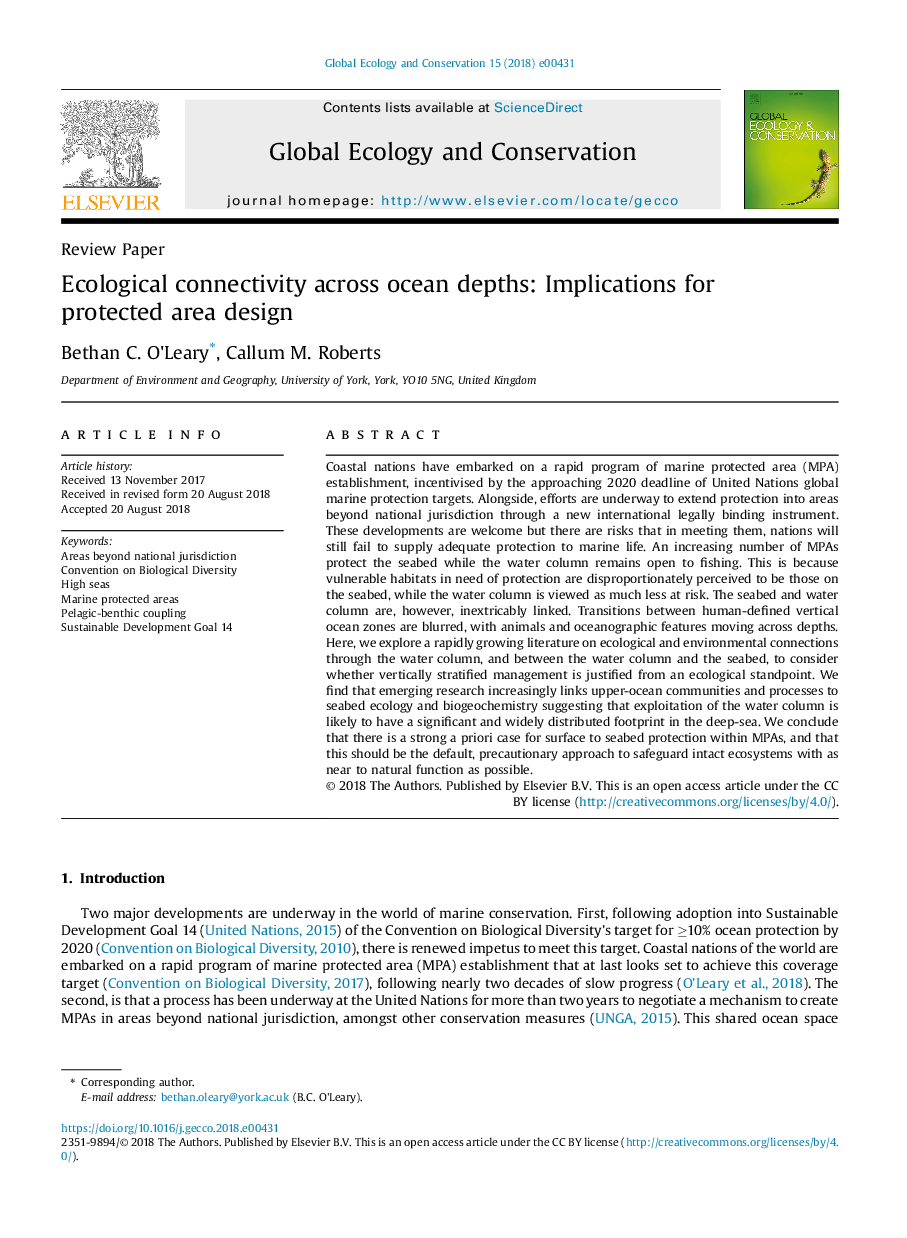| Article ID | Journal | Published Year | Pages | File Type |
|---|---|---|---|---|
| 10110097 | Global Ecology and Conservation | 2018 | 10 Pages |
Abstract
Coastal nations have embarked on a rapid program of marine protected area (MPA) establishment, incentivised by the approaching 2020 deadline of United Nations global marine protection targets. Alongside, efforts are underway to extend protection into areas beyond national jurisdiction through a new international legally binding instrument. These developments are welcome but there are risks that in meeting them, nations will still fail to supply adequate protection to marine life. An increasing number of MPAs protect the seabed while the water column remains open to fishing. This is because vulnerable habitats in need of protection are disproportionately perceived to be those on the seabed, while the water column is viewed as much less at risk. The seabed and water column are, however, inextricably linked. Transitions between human-defined vertical ocean zones are blurred, with animals and oceanographic features moving across depths. Here, we explore a rapidly growing literature on ecological and environmental connections through the water column, and between the water column and the seabed, to consider whether vertically stratified management is justified from an ecological standpoint. We find that emerging research increasingly links upper-ocean communities and processes to seabed ecology and biogeochemistry suggesting that exploitation of the water column is likely to have a significant and widely distributed footprint in the deep-sea. We conclude that there is a strong a priori case for surface to seabed protection within MPAs, and that this should be the default, precautionary approach to safeguard intact ecosystems with as near to natural function as possible.
Keywords
Related Topics
Life Sciences
Agricultural and Biological Sciences
Ecology, Evolution, Behavior and Systematics
Authors
Bethan C. O'Leary, Callum M. Roberts,
